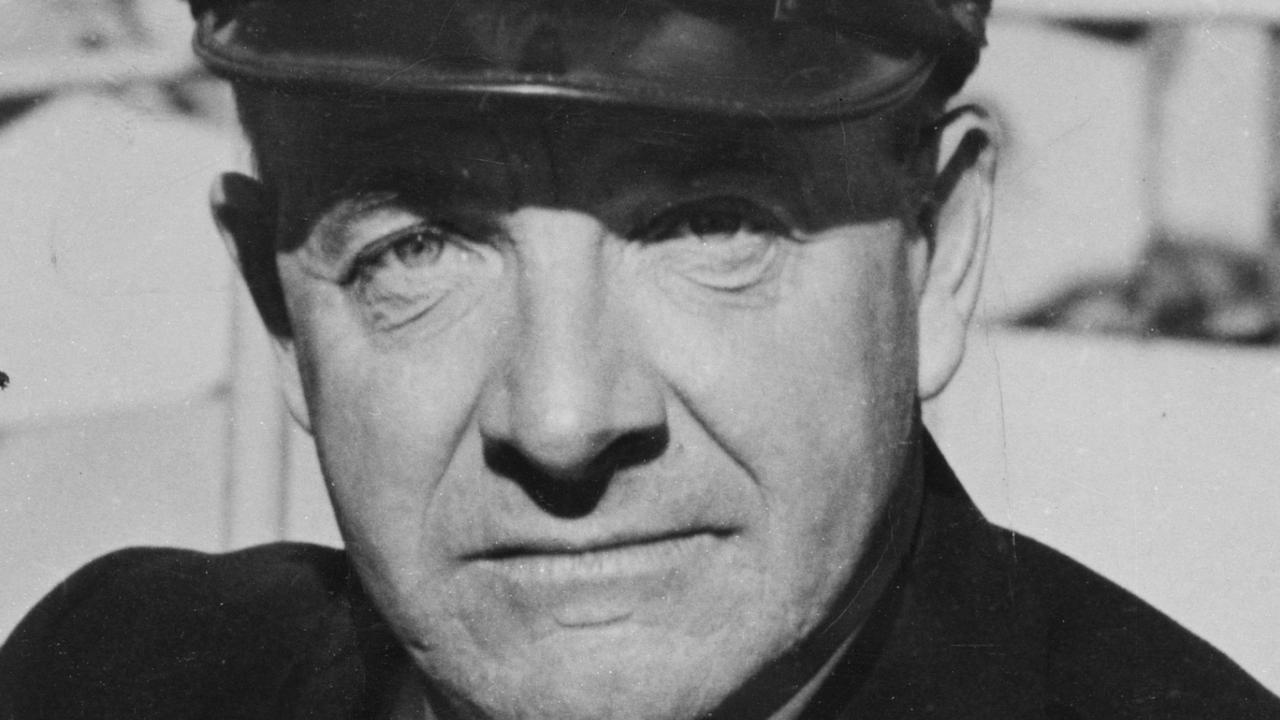A Christian mystery: what came first, Easter or the egg?
THE Christian tradition of Easter eggs credits Mary Magdalene, who travelled to Rome to meet Emperor Tiberius Caesar at a banquet, where she declared “Christ is risen.”

Today in History
Don't miss out on the headlines from Today in History. Followed categories will be added to My News.
LONG before schoolchildren emptied chicken eggs to decorate the shells as Easter gifts, hunter-gatherers on the harsh, remote southern end of Africa’s Namib Desert raided ostrich nests for eggs to use as portable water containers.
Kalahari Bushmen continue the 60,000-year tradition, risking injury from fast and furious birds as they remove eggs from ostrich nests.
A hole is drilled in one end to empty the egg, which is then filled with drinking water. Each eggshell holds about 1 litre, is robust and, being breathable, keeps water cool.
Cambridge University archaeologist Brian Stewart, working in three neighbouring rock-shelters in the Richtersveld region of Namaqualand in northwestern South Africa, has found clusters of ostrich eggshell flasks, often with grass or beeswax stoppers.
Egg fragments found in Spitzkloof and Diepkloof shelters, including some about 60,000 years old, are in a variety of colours, including black, beige, yellow, orange, teal and bright red. Archaeologists accept some discolouration was unintentional, but believe some may have been deliberate, predating 40,000-year-old decoratively carved ostrich shells found through Egypt and into ancient Mesopotamia, now most of Iraq plus Kuwait, eastern parts of Syria and southeastern Turkey.

Although gold and silver ostrich egg models were sometimes placed in the graves of ancient Sumerians and Egyptians from about 3000BC, and Mediterranean Bronze Age people from about 2000BC to 1000BC continued to decorate ostrich eggs, archaeologists have not confirmed eggs had religious significance in ancient culture.
Studies of pre-Christian Zoroastrian beliefs identify a creation myth about an ongoing struggle between good and evil. During a long truce, evil hurls itself into an abyss and good lays an egg. It is suggested eggs were a common symbol of life and rebirth, and the ancient Persian-Iranian celebration of Nowruz, combining new year with the spring equinox, traditionally includes a decorated egg for each member of the family. Egyptians include coloured boiled eggs in a similar celebration, Sham el-Nisim.
Records of Jewish Passover celebrations, held around the northern spring equinox since at least 1440BC, do not specify eggs as part of the feast. But Passover, which celebrates Moses leading Hebrews from slavery in Egypt, helped determine the date of Christian Easter celebrations, also held in the northern spring.

The Bible dates Jesus’ final meal to the Last Supper, celebrating Passover, when Jesus knew he faced death in hours and told his disciples that he “eagerly desired to celebrate this Passover with you before I suffer”.
The Christian tradition of Easter eggs apparently dates to the same time and credits Mary Magdalene, who travelled to Rome to meet Emperor Tiberius Caesar at a banquet, where she declared “Christ is risen.”
Caesar laughed, and said Christ rising from the dead was as likely as the egg in her hand turning red as she held it. Before he finished speaking, the egg in her hand had turned bright red, as she continued to proclaim her faith.
Eastern Orthodox Christian churches were the first to adopt Easter eggs, ending Easter services by sharing bright red eggs as they proclaimed, “Christ is risen!” The eggs came to represent new life, and Christ rising from the tomb.

A Polish legend also credits Mary Magdalene, but recounts that when she went to anoint the body of Jesus she was carrying a basket of eggs to serve as a repast. When she arrived at the sepulchre and uncovered the eggs, the white shells had miraculously changed colours. Another legend credits Easter egg traditions to the Virgin Mary, who gave eggs to soldiers at the cross. As she entreated them to be less cruel she wept, and her tears fell on the eggs, spotting them with dots of brilliant colour.



Easter eggs are also linked with celebrations to end the dietary restrictions of Lent, when eating eggs was traditionally forbidden. Eastern Christianity prohibited, meat, eggs, and dairy during the Lenten fast. As chickens did not stop producing eggs during Lent, eggs were boiled and kept to eat at Easter.
Jeweller Peter Carl Faberge perfected decorative egg creations after Russian Czar, Alexander, commissioned him in 1883 to make an Easter gift for his wife, Empress Marie, beginning an annual tradition that delivered 57 eggs, including some to Alexander’s son Nicholas II. Faberge eggs helped create a central European tradition of artificial porcelain eggs as feminine gifts.
French confectioners concocted the ultimate Easter creation in the 19th century, although the first chocolate eggs were likely bitter and grainy. Bristol chocolatiers J.S Fry & Sons introduced chocolate eggs to Britain in 1873, copied two years later by Birmingham-based confectioners, Cadbury.
Originally published as A Christian mystery: what came first, Easter or the egg?


